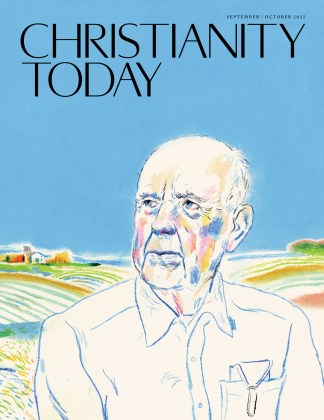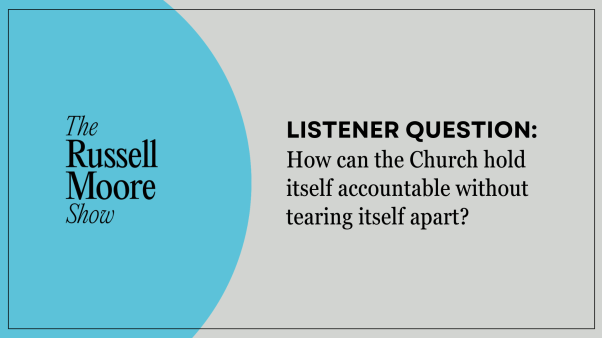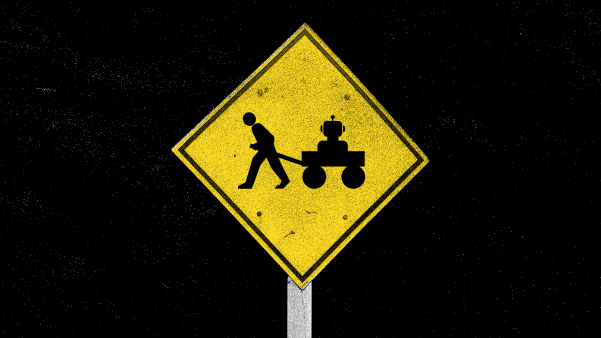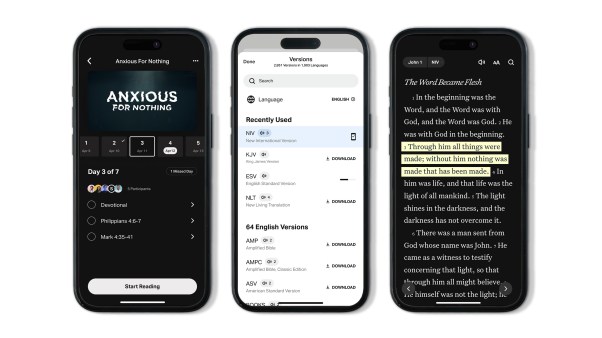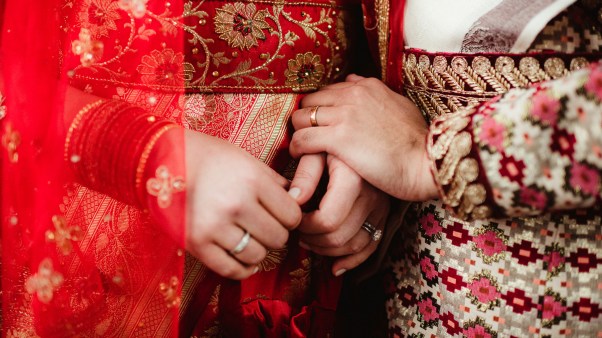Something has happened in the last 25 years in American evangelicalism—what I believe to be a massive generational shift. I’d like to sketch a picture of the change I see and ask if you see it too.
First, though, let me set the scene. I have in mind low-church Protestant traditions in the United States: churches centered on the Bible, evangelism, and personal faith in Jesus; often but not necessarily nondenominational, with moderate to minimal emphasis on sacraments, liturgy, and ecclesiastical authority; and marked by a revivalist style as well as conservative beliefs about sex, marriage, and other social issues. Historically, these congregations were predominantly white and middle- to lower-class, though not as uniformly as is often imagined. Many were founded within the last three decades, and they’re typically given to long sermons, contemporary worship, monthly Communion, and lots of lights.
These are the churches in which I’ve noticed what I would call a kind of loosening. This shift is largely unwitting, or at least unplanned. It is not consistent or ideological; it is not a program or platform; it’s not even conservative or liberal per se (and my goal here is not to render an overall positive or negative judgement on the change). This loosening consists of a broad relaxation of previously unspoken—or at least unwritten—social norms.
The most obvious example is attitudes about alcohol. For generations, American evangelicals were known to be highly suspicious of drinking, sometimes to the point of being teetotalers. This remained true through my teen years, and when I heard that Brother Joe or Sister Jane enjoyed a glass of wine before bed, it was whispered knowledge about private behavior. Joe and Jane were not drinking in public. They certainly weren’t microbrewing beer in their garage and handing out samples at small group.
Two decades later, so far as I can tell, this taboo on alcohol has all but disappeared. Professors at my private Christian university aren’t allowed to drink with students. But just a dozen years ago they weren’t allowed to drink at all, and this rule change is not an anomaly in evangelical institutions.
Now think of other timeworn taboos among American evangelicals: tattoos, dancing, gambling, smoking, even mothers working outside the home. “Cool” celebrity pastors are far from the only millennial and Gen Z evangelicals with tattoos. If I were to ask one of my devout Christian college students what theological reasoning informed their decision to sport multiple tattoos, they would not offer me careful rebuttals of their grandparents’ outmoded interpretation of Leviticus 19:28. They would give me a blank stare: What does God have to do with it?
Or consider entertainment. Churches and Christian parents continue to police the boundaries of appropriate content, but the window has widened considerably. Once upon a time, Disney movies were suspect. Onscreen sex, language, and violence were known to be dangerous causes of adolescent misbehavior. But now evangelicals’ viewing habits appear interchangeable with your average Netflix or HBO subscriber. Some even cast watching Game of Thrones or The Sopranos as a task of cultural engagement: I’m just doing my missional duty. If the gore, cruelty, and nudity offend your fundamentalist upbringing, so much the worse for you, weaker brother.
This loosening is happening within the church building too. The American evangelicals I have in mind traditionally looked askance at practices reminiscent of Catholicism—formal liturgy, vestments, sacraments, the church calendar, sometimes even creeds. These things were long seen as extrabiblical innovations that threaten to obscure the gospel, usurp the sovereign authority of Christ, or promote a lifeless, nominal faith.
Yet today I see an astonishing movement by all kinds of evangelical institutions toward retrieving these formerly Catholic-coded practices. Christians who once refused to acknowledge Easter as distinct from every Sunday’s celebration of the Resurrection now observe Lent. Churches founded on a principled rejection of creeds recite the Apostles’ or Nicene Creeds each Sunday. Churches historically committed to memorialism speak of the real presence of Christ in the Eucharist (and they call it “the Eucharist,” not just “the Lord’s Supper”).
The loosening even extends to evangelical seminary curricula and sermon research. Professors and pastors reference writers and thinkers outside evangelicalism and even Protestantism, drawing on Catholic priests, medieval Orthodox monks, and patristic bishops and councils. Like all my other examples, this is not a shift in service of theological liberalism. In some cases—creedal recitation particularly comes to mind—it is a conservative change, a turn to catechesis as a bulwark against theological drift.
Now, I called this loosening a “generational shift,” and, in one sense, it is. But in my observation, it’s not only the under-40 crowd doing these things. If that were the case, we’d still have an important change underway, but it might be nothing more than the normal pattern of children unlearning their parents’ ways.
My contention, instead, is that it’s not just millennials and Gen Zers who are loosening. It’s their parents and grandparents too. Former teetotalers are now drinking; one-time Disney boycotters are binging Netflix; erstwhile skeptics of gambling are hosting poker nights.
If I’m right, this is a seismic shift, not business as usual. What’s going on? What has led so many evangelicals in such a brief span of time to shed so many social and liturgical taboos?
Before I venture four ideas, I should acknowledge that I’m doing some speculating here. I don’t have charts and graphs to back up my sketch or prove some explanation. But just as I’m sharing my observations to see if they’re widely recognizable, so I’m floating these four ideas to see if they resonate with Christians in other corners of American evangelicalism.
First, this loosening suggests to me that American evangelicalism’s many unwritten norms were not sustained solely by doctrine, congregational authority, or biblical teaching. Norms against drinking, tattoos, formal liturgy, and the like were extraordinarily powerful and uniform because of the ambient culture surrounding the church.
In many cases, that outside support included the state. It’s no coincidence that this loosening has occurred while laws related to “vice”—alcohol, divorce, drugs, and once-illegal sexual activities—have been falling like dominoes across the last half-century. Sometimes law is downstream from culture, sometimes upstream, but either way, the church is part of this social river.
Second, a less Christian and more secular culture creates new incentives and pressures on ordinary believers. If everyone in the non-Christian majority believes or does x, it becomes a conspicuous sign of Christian discipleship (or intransigence) to continue abstaining from x. This leads all believers, pastors included, to reconsider their commitments: Is alcohol, after all, forbidden by God? In black and white, chapter and verse? If not, then why am I suffering my neighbors’ or coworkers’ scorn? Besides, everyone always knew about Joe and Jane’s wine collection. Let’s go ahead and join them.
Third, when Scripture is ambiguous or disputable on some matter while the wider culture’s position is clear, the onus falls to pastors or the institutional church to convince congregants to reject that wider cultural norm. And what we have seen in recent decades is a decline of pastoral authority, the death of thick denominational identity, and a crisis of confidence in Christian institutions.
The elders say so or Pastor John knows best doesn’t cut it anymore. I can vote with my feet and join a church whose pastor says otherwise. Who is Pastor John, anyway? Isn’t he the same one who told me all believers are capable of interpreting Scripture for themselves? And that no authority except Scripture should decide matters of faith and morals? And that all matters on which Scripture is silent are “indifferent,” subject to personal conscience?
Fourth and finally, there are no sectarians in post-Christian foxholes. As counterintuitive as it may seem, the same forces leading evangelicals to start drinking, getting tattoos, and watching HBO are also leading them to say the creeds, receive ashes on their forehead, and read Pope Benedict XVI. When the world feels arrayed against faithfulness to Christ, you need all the friends you can get. Doctrinal differences that aren’t relevant to current cultural battles—think infant baptism, not theologies of sex and gender—can be overlooked in a pinch.
This is what I mean when I say that the loosening I see is no top-down, organized, ideological plan. It’s happening organically, all at once, sometimes in apparently contradictory ways. For this reason, it’s not easy to judge. I myself grew up without liturgy in the church or alcohol in the home; now I cross myself before prayer and enjoy a drink with my parents. On the other hand, I lament the colonization of believers’ leisure time by screens, whether streaming TV or apps like TikTok, as well as the accompanying laissez-faire attitude about onscreen content.
Whether each specific trend is good, bad, or yet to be determined, I do know this loosening has happened during the same years that church attendance has decreased while loneliness and congregations’ loss—or refusal—of authority over their members have increased. What looks like gain for some (perhaps less authority means less propensity for abuse) may be loss for others (wayward members who need strong medicine to get their lives on track).
Either way, American evangelicalism is changing, even as I write. What will it look like when this shift is finished? God knows.
Brad East is an associate professor of theology at Abilene Christian University. He is the author of four books, including The Church: A Guide to the People of God and Letters to a Future Saint: Foundations of Faith for the Spiritually Hungry.
